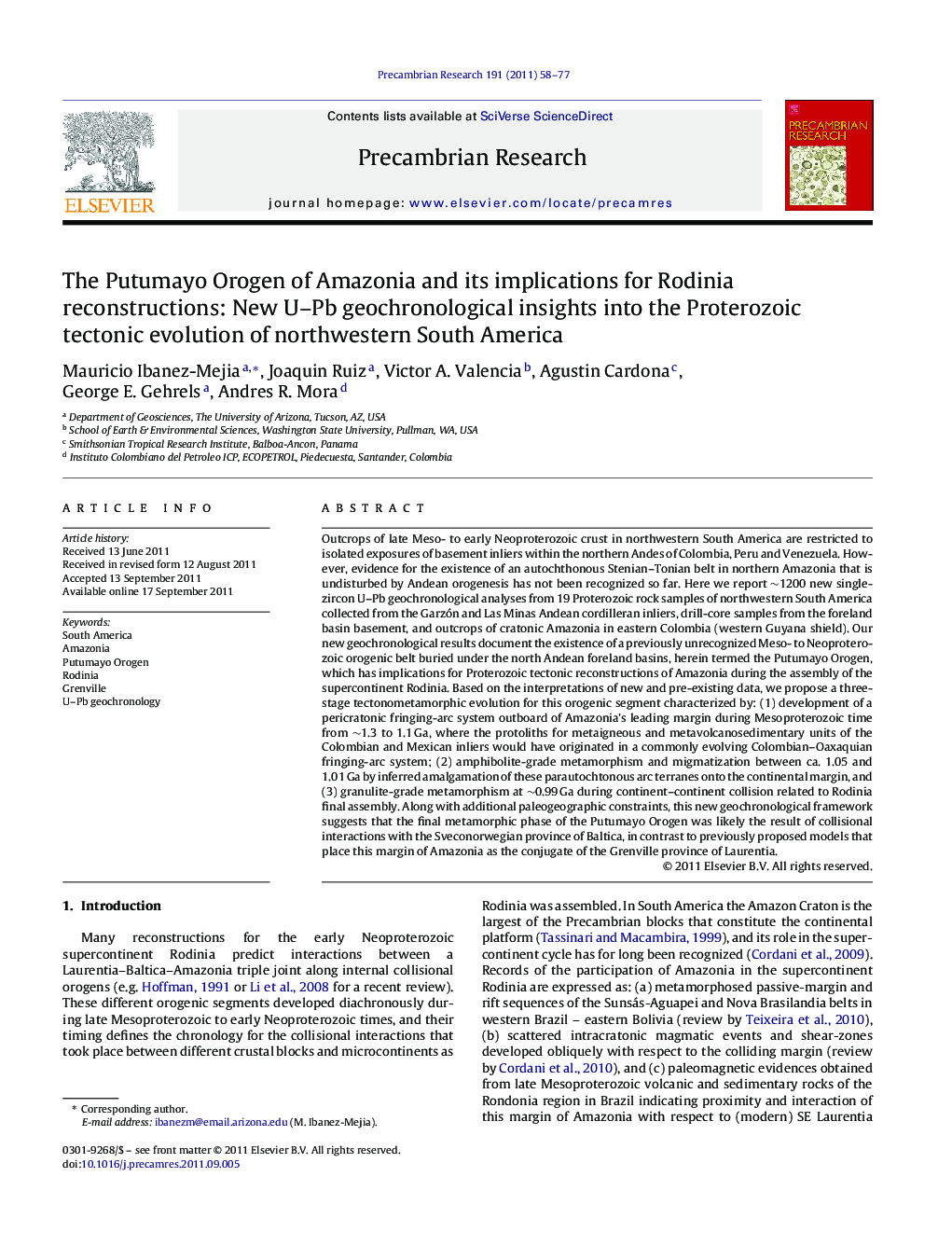| کد مقاله | کد نشریه | سال انتشار | مقاله انگلیسی | نسخه تمام متن |
|---|---|---|---|---|
| 4723657 | 1639664 | 2011 | 20 صفحه PDF | دانلود رایگان |

Outcrops of late Meso- to early Neoproterozoic crust in northwestern South America are restricted to isolated exposures of basement inliers within the northern Andes of Colombia, Peru and Venezuela. However, evidence for the existence of an autochthonous Stenian–Tonian belt in northern Amazonia that is undisturbed by Andean orogenesis has not been recognized so far. Here we report ∼1200 new single-zircon U–Pb geochronological analyses from 19 Proterozoic rock samples of northwestern South America collected from the Garzón and Las Minas Andean cordilleran inliers, drill-core samples from the foreland basin basement, and outcrops of cratonic Amazonia in eastern Colombia (western Guyana shield). Our new geochronological results document the existence of a previously unrecognized Meso- to Neoproterozoic orogenic belt buried under the north Andean foreland basins, herein termed the Putumayo Orogen, which has implications for Proterozoic tectonic reconstructions of Amazonia during the assembly of the supercontinent Rodinia. Based on the interpretations of new and pre-existing data, we propose a three-stage tectonometamorphic evolution for this orogenic segment characterized by: (1) development of a pericratonic fringing-arc system outboard of Amazonia's leading margin during Mesoproterozoic time from ∼1.3 to 1.1 Ga, where the protoliths for metaigneous and metavolcanosedimentary units of the Colombian and Mexican inliers would have originated in a commonly evolving Colombian–Oaxaquian fringing-arc system; (2) amphibolite-grade metamorphism and migmatization between ca. 1.05 and 1.01 Ga by inferred amalgamation of these parautochtonous arc terranes onto the continental margin, and (3) granulite-grade metamorphism at ∼0.99 Ga during continent–continent collision related to Rodinia final assembly. Along with additional paleogeographic constraints, this new geochronological framework suggests that the final metamorphic phase of the Putumayo Orogen was likely the result of collisional interactions with the Sveconorwegian province of Baltica, in contrast to previously proposed models that place this margin of Amazonia as the conjugate of the Grenville province of Laurentia.
► A new Ectasian to Tonian mobile belt in northwestern South America is recognized.
► U–Pb zircon geochronology reveals a distinct evolution with respect to the Sunsas orogen.
► Metamorphism at ca. 990 Ma reflects the time of final collision during Rodinia assembly.
► A link is made between this belt, the Andean inliers, Oaxaquia and the Sveconorwegian Orogen.
► The term “Putumayo Orogen” is proposed for this orogenic belt.
Journal: Precambrian Research - Volume 191, Issues 1–2, November 2011, Pages 58–77